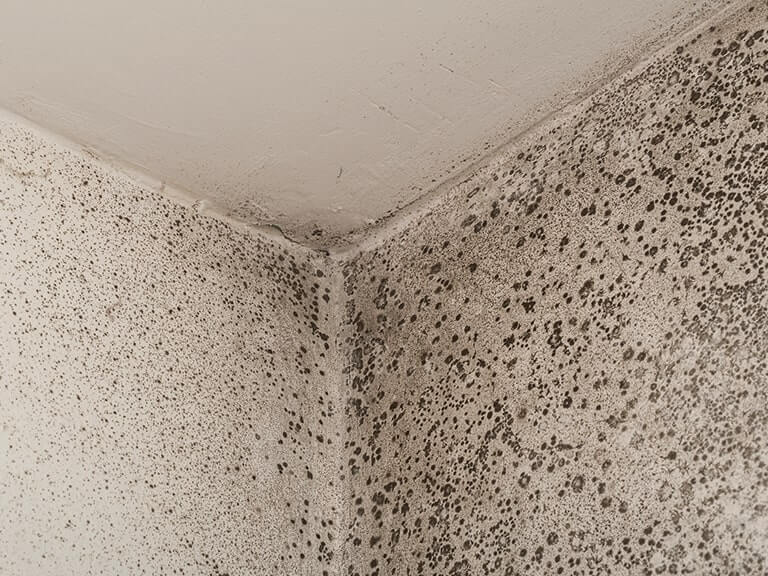The only thing worse than spotting mould growing on your walls? Spotting it after you’ve just spent days trying to eradicate it from your home.
Unfortunately, mould returning after removal is all too common. It only takes a few microscopic spores for a patch of mould to start spreading again, so even if you’ve scrubbed off as much as you can see, the odds of it returning are high.
If the thought of going through another gruelling mould removal process is enough to make you pull your hair out, take heart. The mould specialists at Prokil have decades of experience dealing with infestations big and small (including repeat offenders), so they know all the tricks for making sure mould doesn’t come back once it’s been eliminated. Read on for our top tips on preventing mould from rearing its ugly head once and for all!
1. Identify and resolve the root cause
Like damp and rot, mould is almost always found in moist, poorly ventilated areas. This can be due to leaky pipes, condensation, or inadequate ventilation from things like drying clothes indoors or taking showers.
Unless you deal with whatever’s causing the mould to grow in the first place, getting rid of it for good is near impossible. Luckily, there are plenty of ways you can do this:
Improve ventilation
Without proper air ventilation, moisture can get trapped inside your home and create the perfect environment for mould to thrive. You can avoid this by opening windows regularly, especially after cooking, showering, or drying clothes indoors. Consider installing extractor fans in bathrooms and kitchens to remove excess moisture, and make sure to keep furniture away from walls to prevent moisture from getting trapped in between.
If improving the ventilation still isn’t enough, you may want to invest in a dehumidifier that can help remove even more moisture from the air.
Upgrade old windows
Old windows often allow warm air from inside your home to come into contact with the colder glass, causing condensation. Condensation creates moisture on the windows and surrounding surfaces, which is a prime environment for mould growth.
If your windows are reaching the end of their lifespan, consider upgrading to newer, more energy-efficient windows – these use double or even triple-paned glass with inert gases in between, which helps maintain a more consistent temperature on the window surface. This reduces condensation and the potential for mould growth.
Fix leaks
By gradually allowing moisture to seep into your home, leaks can create the ideal conditions for mould to grow. This can happen through cracks in the ceiling, damaged pipe joints, or worn-out seals.
To find out if you have a leak in your home, look for these signs of water damage:
- Damp or discoloured patches on ceilings, walls, or floors
- Peeling wallpaper or bulging drywall
- Cracks in the foundation
- Unusual noises coming from your plumbing system, like hissing or trickling water.
If you suspect a leak, it’s important to identify and fix the source as soon as possible to prevent further damp and mould growth.
Install a new damp proof course
Moisture in your walls can also be caused by issues with your damp proof course.
A damp proof course is a barrier designed to prevent moisture from the ground from seeping up into the walls. If this barrier is missing or has failed, there’s nothing to stop the moisture from rising up, which can lead to the growth of damp and mould. One telltale sign of a problem with the damp proof course is the presence of rising damp patches at the base of the walls.
In these cases, installing a new, effective damp proof course is essential for preventing further damp and mould problems.
2. Treat the walls
Once you’ve dealt with the root cause of the moisture problem, you can turn your attention back to the mould itself. While it might be tempting to tackle this yourself, your best bet is to call in the professionals for this step – mould can often be more extensive than it appears on the surface, and it may require specialised tools and techniques to properly identify and remove all traces of it.
A professional mould remediation specialist will have the expertise and equipment to fully assess the scale of the issue. They can then use high-strength fungicidal products to thoroughly clean the affected areas and eliminate any remaining mould spores. After the walls have had a chance to fully dry out, they may also apply a mould-resistant paint or add a mould inhibitor to your existing paint. This provides an extra layer of protection against future mould growth, helping keep your home mould-free long-term.
Get rid of mould for good with Prokil’s expert mould treatment service
With over 50 years of experience tackling damp, mould, and rot infestations, the team at Prokil understand the importance of a clean, safe home more than anyone. That’s why we’ve designed our mould treatment service to be both comprehensive and cost-effective.
When surveying your home, we’ll identify the root cause of the mould and help you resolve it, such as by installing an effective new ventilation system or damp proof course. We’ll then thoroughly sterilise your home using leading-edge fungicides that eliminate all traces of mould without damaging your property. The result will be a safe, clean home where your family can live with peace of mind – all for a lower price than you’d expect!
Our services cover much of the South, including Dorset, Hampshire, Berkshire, Surrey, Devon, South Wales, West Sussex, Kent, London, and beyond. If you’re ready to get started, book a home survey online or call us on 0800 048 9488 today!

